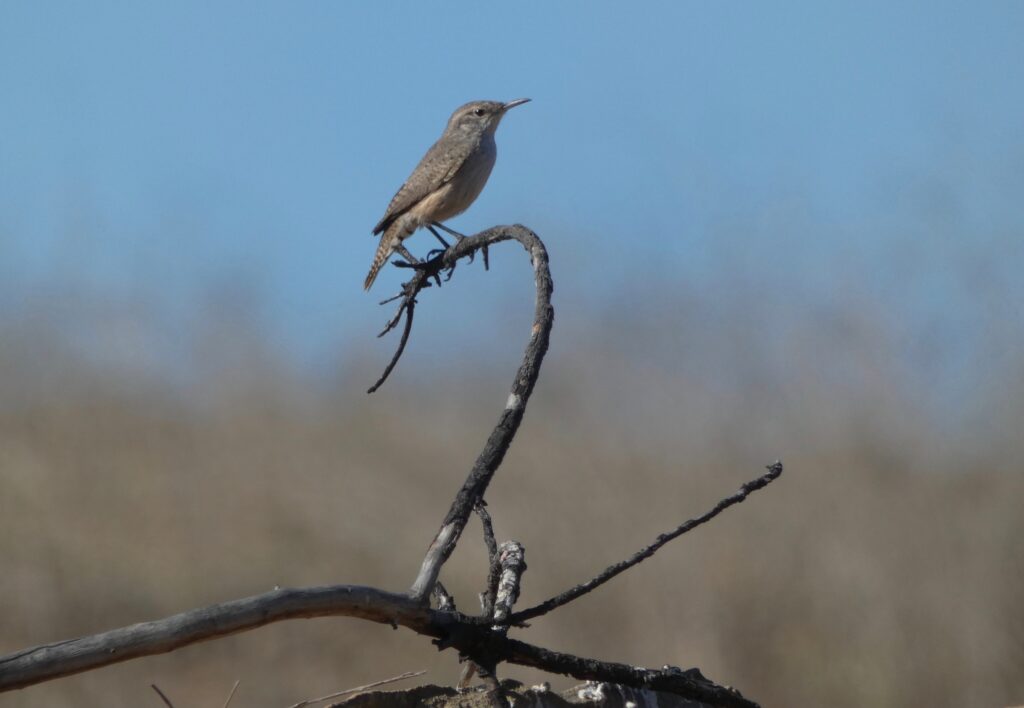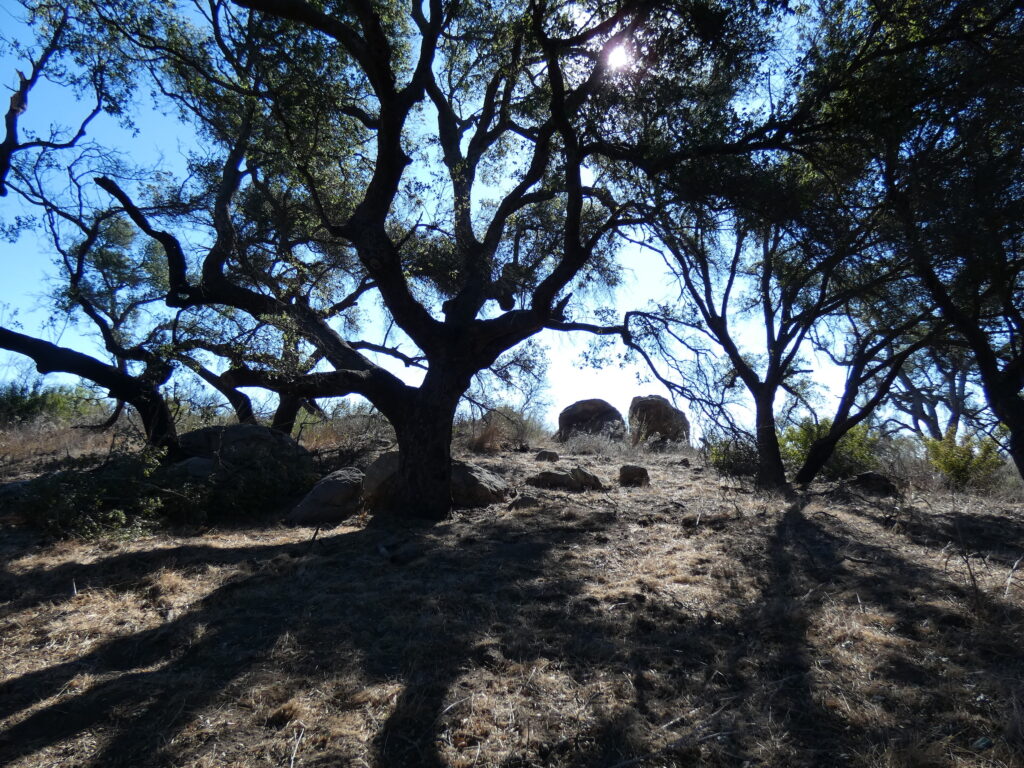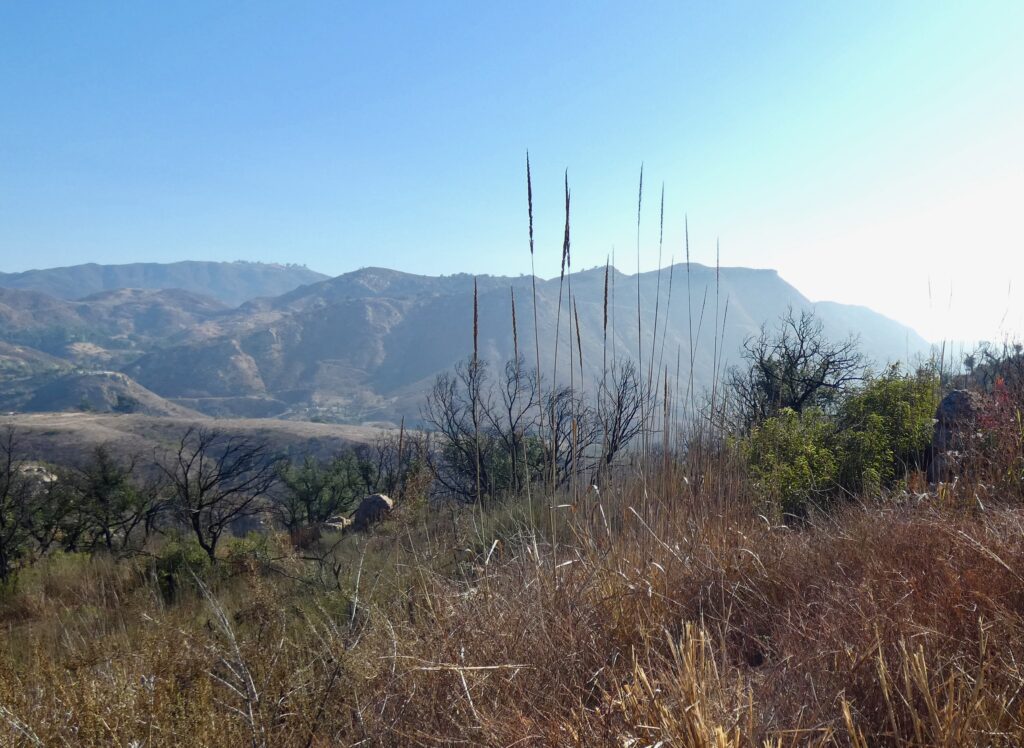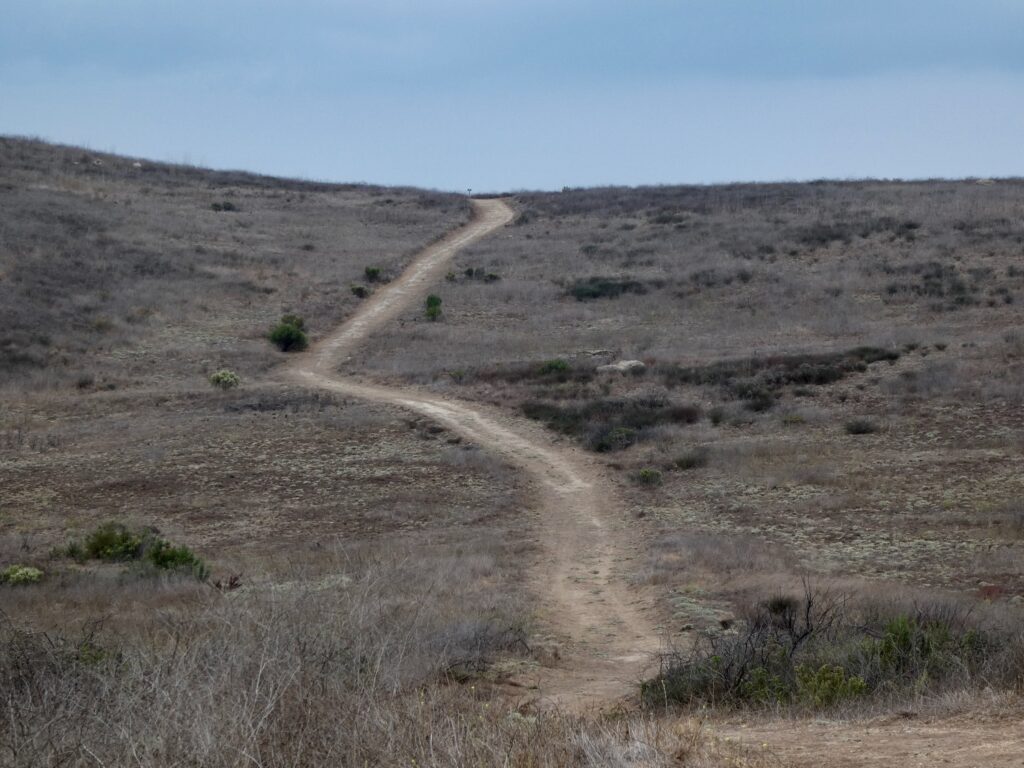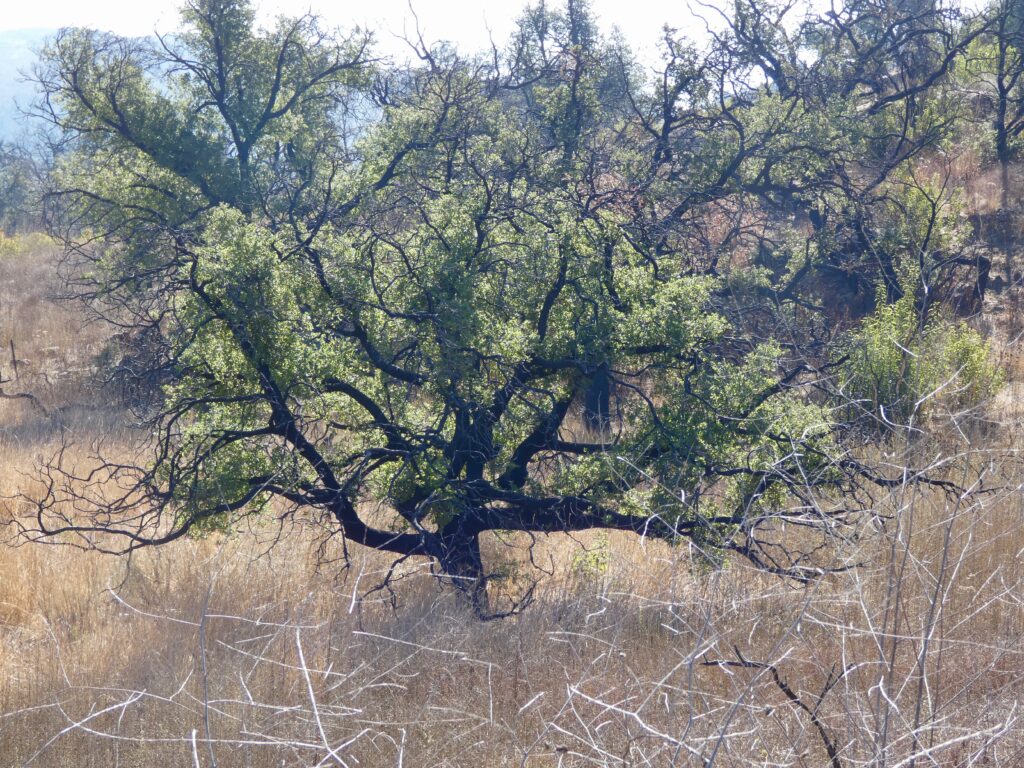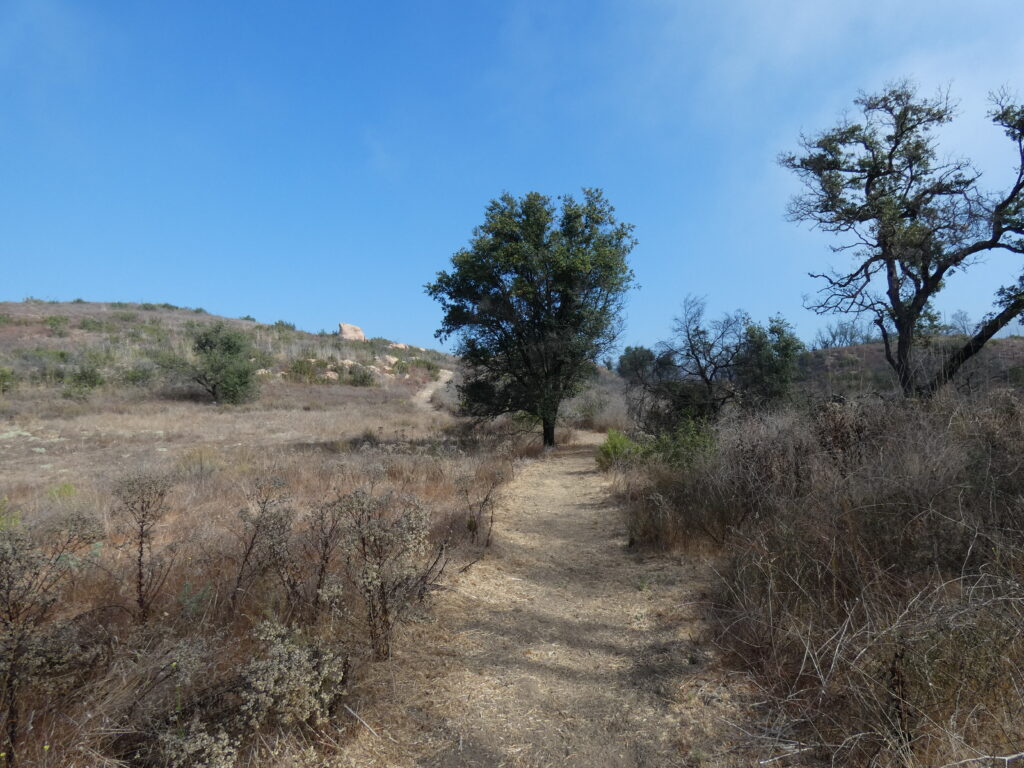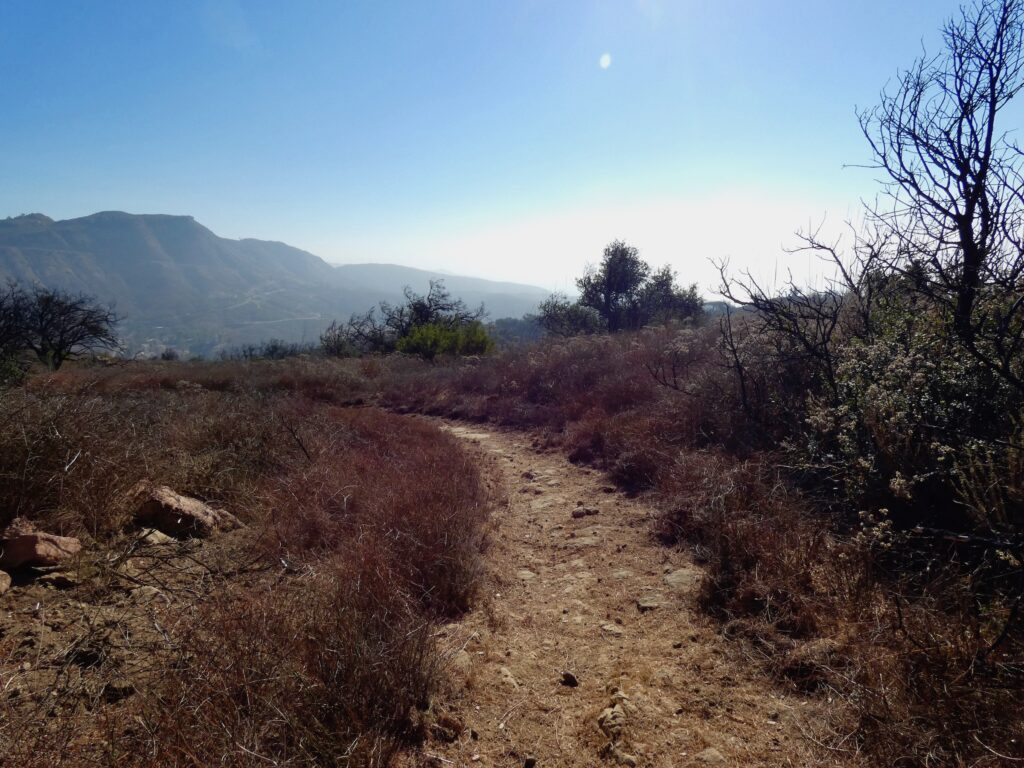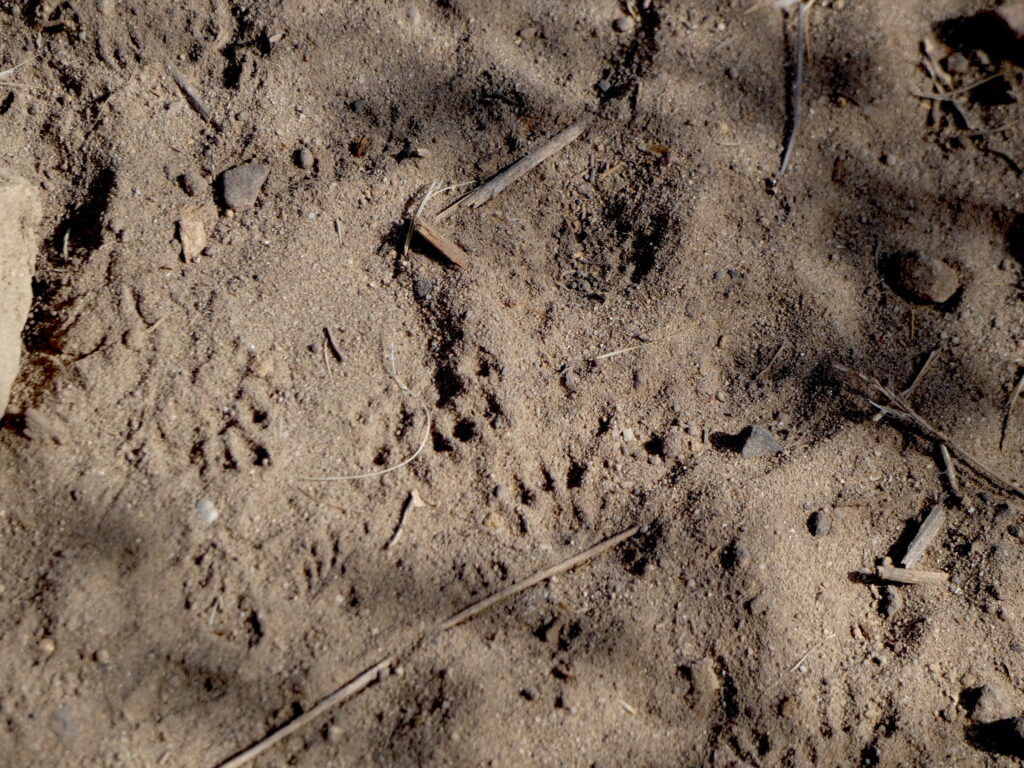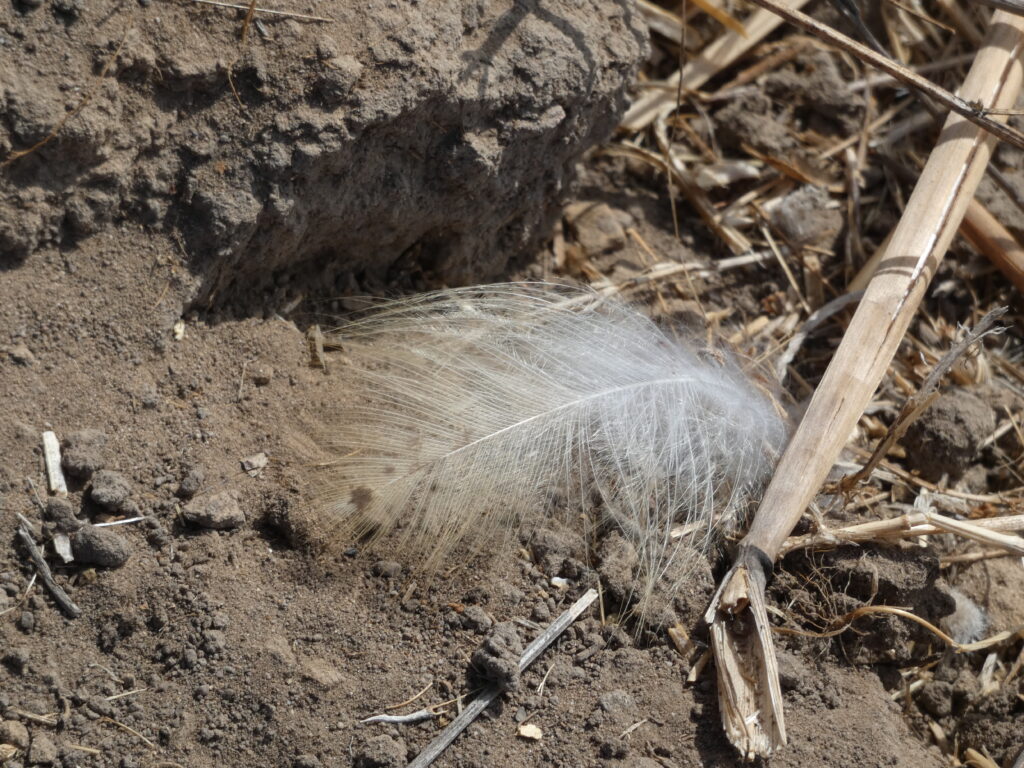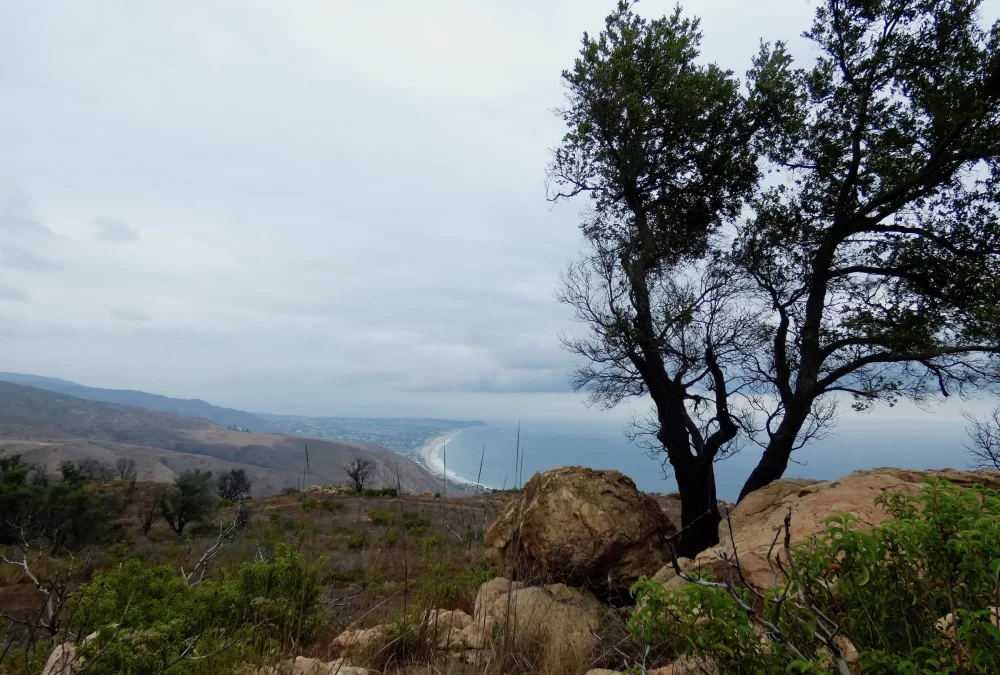Two years after it was burned in the Woolsey Fire, Charmlee Wilderness Park is open again. The reopening took place quietly and without fanfare on October 19, but for survivors of the 2018 Woolsey Fire, this reopening was a significant milestone.
The Woolsey Fire ignited on November 8, 2018, near Southern California Edison equipment at the old Santa Susana Field Laboratory at the northern end of the San Fernando Valley. By noon on the following day, the fire had raged to the sea in west Malibu, consuming nearly half the area of the Santa Monica Mountains on its way.
The fire took just six and a half hours to burn to the sea once it jumped the 101 in the early hours of November 9. Residents scrambled to evacuate. The emergency response, hampered by the size and speed of the fire, was also impacted by a lack of mutual aid and air response. Many resources were already deployed at the catastrophic Paradise Fire in Northern California and the smaller but also fast-moving Hill Fire in Camarillo. Calls for mutual aid were largely unsuccessful, even when it became evident that the Woolsey Fire was rapidly becoming one of the largest, fastest moving wildfire disasters in Los Angeles County history.
The Woolsey Fire continued to flare and reignite for days, spread by embers as the Santa Ana winds continued to blow. The fire fight became a marathon. Full containment wasn’t achieved until November 22, and even after the fire was out the disaster was far from over.
The Woolsey fire burned 96,949 acres—151.5 square miles, including nearly 90 percent of National Park Service land in the Santa Monica Mountains, but also thousands of acres of state and local parkland, including Charmlee, which is part of the city of Malibu. The cost of the fire is currently estimated at more than $6 billion.
Charmlee Wilderness Park is located in Encinal Canyon, a historic fire corridor. It was hit hard by the fire. This wasn’t the first time this area has burned. Fire swept through the canyon in 1935, and then again in 1956, destroying the mid-century ranch built by—and named for—actors and real estate developers Charmain and Lee Schwartz. The property burned again in 1978, disrupting plans for a golf course development at the site that were already on shaky ground due to geologic constraints, and once more in 1985, shortly after becoming a county regional park. During the 1978 and 1985 fires there was at least some firefighter intervention. In 1985, resources were deployed to help protect a grove of heritage oak trees. During Woolsey, there was nothing to blunt the full force of the fire.
The Encinal corridor, from Kanan to the sea, was transformed into an apocalyptic wasteland by the fire on November 9. After the fire was out, it took weeks for electrical service and communications to be restored to most parts of the burn zone, but in Encinal Canyon the destruction was so extensive that work took months. Two nearby sections of Mulholland Highway were so badly damaged they remain closed two years after the disaster.
The first rains in what would be one the wettest winters in recent history arrived just weeks after the fire was out, further damaging trails and infrastructure at Charmlee. Repairing and reopening the park was hampered by a complicated land swap with the Mountains Recreation and Conservation Authority that was terminated shortly before the fire and resulted in delays with FEMA paperwork and funding.
When the super bloom of fire-following flowers appeared in the spring, no one was there to see it at Charmlee, except those who ignored the “park closed” signs. The closure was frustrating for park users, but it may have been a benefit for the wildlife, left to recover without human interference during a time when record numbers of people were out on the trails throughout the National Recreation Area.
Charmlee is only 532 acres, but it is a special place that preserves some of the ancient oak groves that gave Encinal—oak in Spanish—its name, dozens of dramatic rock formations, and stellar ocean views. It’s also home to numerous special concern species, from Catalina mariposa lilies to the Riverside fairy shrimp and the ringtail cat.
I visited Charmlee for the first time on the day it opened as a regional park in 1981 with my dad, who was a passionate advocate for conservation. That was just three years after it burned in the catastrophic 1978 Agoura-Malibu fire. I felt a strong sense of slipping back in time when I visited on October 18, the day the park reopened after Woolsey, and found it to be still beautiful, and amazing, and wild.
Malibu city staff have worked throughout the year to rebuild and stabilize trails. Consultants were brought in to salvage or demolish oak trees—a serious safety issue because so many of the trails run under groves of oaks. Some of the trees didn’t survive, but many have resprouted, some from the trunk and branches, others from the roots.
When the park reopened there was ample evidence of a robust recovery of both the plant and animal communities. The footprints of rabbits, rodents and lizards pattern the newly rebuilt trails, owl pellets and coyote scat reveal the presence of predators that prey on these species, and birds are everywhere—in the trees, on the trail and overhead.
Two years after the fire, the burn scar continues to heal in Charmlee and throughout the footprint of the Woolsey Fire, but it’s a slow process. The fire destroyed 1,643 structures and damaged 364 more.
Approximately 36 percent of the losses were in the city of Malibu, where just 15 houses have been rebuilt, with 155 rebuild permits issued and 262 in the process of being reviewed. The reopening of Charmlee is a symbol of hope, one that says that recovery and rebirth are not just possible, they are underway.
